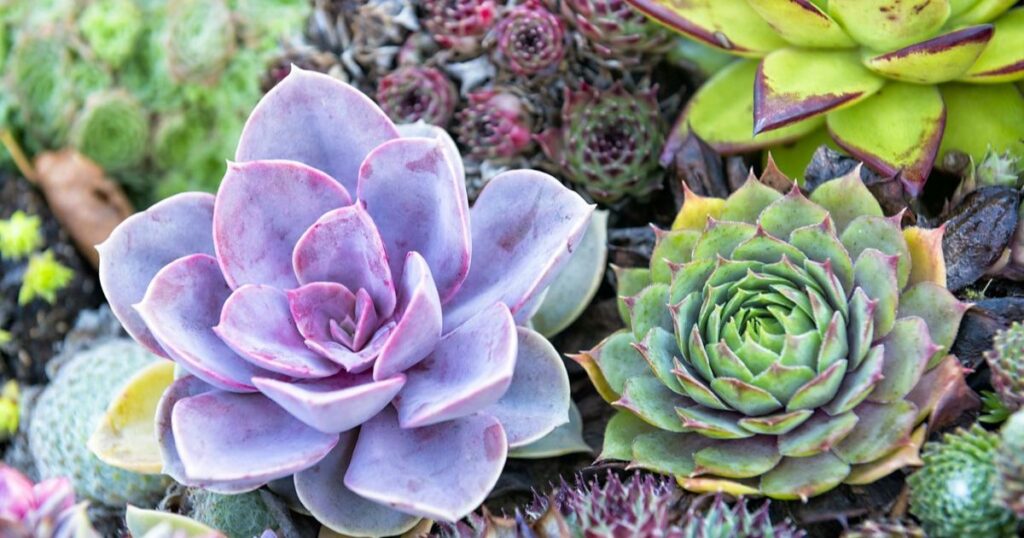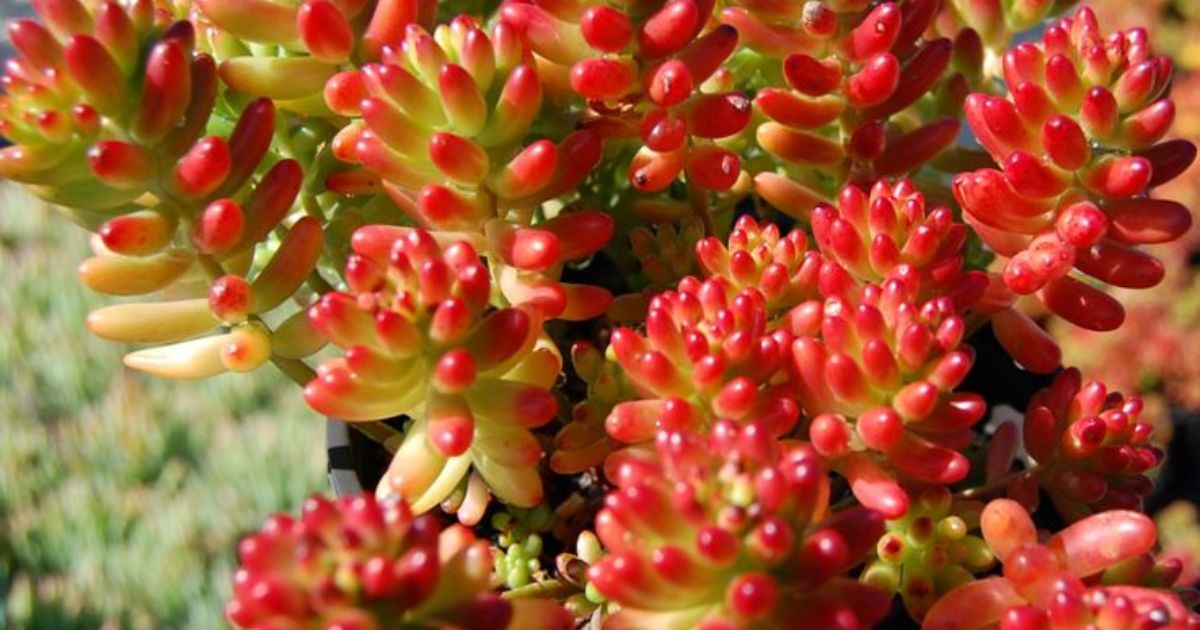How long do succulents last? Succulents, known for their water-storing abilities and resilient nature, have varying lifespans influenced by factors such as species, care, and environmental conditions. In simple terms, the duration a succulent thrives is determined by its specific characteristics and the care it receives from its owner.
How long do succulents last? It’s a question that echoes in the minds of plant enthusiasts and beginners alike. The fascinating world of succulents beckons us with a promise of hardiness and unique beauty, prompting curiosity about their longevity. Whether you’re a seasoned succulent keeper or a novice in the realm of potted plants.
Succulents, with proper care, can endure for many years, showcasing their distinctive forms and vibrant hues. The longevity of succulents hinges on factors such as sunlight exposure, watering frequency, and the type of soil they inhabit. Some varieties may outlast others, and attentive caretakers often find themselves rewarded with thriving succulents that become enduring companions in homes, offices, and gardens alike.
Dormant vs Active Growing Succulents

Understanding the dormant and active growing phases of succulents is pivotal for effective care and ensuring their longevity. During the dormant period, which typically occurs in winter, succulents experience slower growth and may require less frequent watering. This phase allows the plant to conserve energy and prepare for the upcoming active growing season in spring and summer when sunlight and temperature levels are more favorable.
Dormant succulents benefit from reduced watering to prevent waterlogged soil, minimizing the risk of root rot. Monitoring changes in growth patterns and adjusting care practices accordingly promotes a healthy transition between dormancy and active growth. Recognizing these natural cycles contributes to the overall well-being of succulents, fostering resilience and extending their lifespan through mindful care practices.
Outdoor Hot Climates
Succulents thrive in outdoor hot climates due to their natural adaptation to arid environments. These hardy plants excel in regions with ample sunlight, minimal rainfall, and well-draining soil. Species like agaves and sedums are particularly suited to hot climates, displaying vibrant colors and robust growth. When considering succulent care, many wonder, Does succulent plants need sunlight. The answer is a resounding yes; sunlight is essential for their well-being, promoting healthy growth and maintaining their characteristic appearance.
In scorching outdoor environments, it’s essential to choose succulent varieties that are well-suited to the specific climatic conditions. Plants like Aloe vera and Echeveria elegans are known for their ability to withstand intense heat. Additionally, providing a layer of mulch around the base of the succulents can help regulate soil temperature and moisture levels, contributing to their overall longevity in outdoor hot climates.
Indoor or Cool Climates
Succulents, surprisingly adaptable, can also thrive in indoor or cool climates, making them versatile additions to any environment. In cooler settings, it’s crucial to mimic their native arid conditions by ensuring they receive ample sunlight. Placing succulents near south-facing windows or supplementing with artificial light can replicate the necessary sunlight exposure.
Indoor succulents may benefit from periodic exposure to warmer conditions, such as placing them outside during milder seasons. This helps stimulate growth and promotes a healthier succulent life cycle. The adaptability of succulents makes them excellent choices for both indoor and cool climate environments, offering plant enthusiasts the opportunity to enjoy these captivating plants regardless of their geographical location.
Some Coastal Beach Cities
Coastal beach cities, characterized by a unique combination of sun, sea, and often sandy soil, present an interesting environment for succulents. Certain succulent species thrive in coastal regions due to their tolerance for salt spray and the well-draining nature of sandy soils.
In coastal beach cities, succulents may require some protection from intense sun and salt exposure. Placing them strategically, such as in well-designed garden beds or containers, allows for better control over their microenvironment. As with any setting, understanding the specific needs of succulents in coastal areas contributes to their overall health and longevity, ensuring they remain resilient and picturesque in these idyllic locations.
Young and Small vs Mature and Big Succulents
The size and maturity of succulents play a crucial role in their lifespan and overall resilience. Young and small succulents are often more vulnerable to environmental stressors, requiring careful attention to establish strong root systems. Adequate sunlight and proper watering are paramount during this initial growth phase.
Mature and big succulents, once established, are often more resistant to extreme conditions and can endure longer periods of neglect. However, regardless of size, regular monitoring and care remain essential for sustaining their health. Providing sufficient space for growth, appropriate soil conditions, and occasional pruning contribute to the sustained vitality of both young, small succulents and their more mature, larger counterparts.
Understanding the Succulent Life Cycle
The succulent life cycle encompasses various stages, from germination to maturity and reproduction. Understanding these stages is fundamental to providing the appropriate care for different developmental phases. Succulents typically start as seeds, requiring optimal conditions such as well-draining soil and adequate moisture for successful germination.
Mature succulents enter the reproductive phase, producing offsets, flowers, or seeds. Proper care during each stage, including providing suitable light, water, and nutrients, contributes to the overall health and longevity of the succulent. Recognizing the signs of maturity and adjusting care practices accordingly ensures that succulents continue to thrive and bring beauty to their surroundings throughout their entire life cycle.
The Average Lifespan of Common Succulent Species
While the lifespan of succulents varies among species, some common varieties exhibit impressive longevity with proper care. Echeveria, Aloe vera, and Agave are examples of succulents known for their enduring nature. On average, well-maintained succulents can live for several years, and in some cases, decades.
Creating a conducive environment, including well-draining soil, appropriate sunlight, and mindful watering practices, significantly contributes to extending the life of common succulent species. Observing the growth patterns and adapting care strategies based on the specific needs of each type of succulent enhances their resilience, allowing these captivating plants to thrive for an extended period in gardens, homes, and landscapes.
| Succulent Species | Average Lifespan | Key Care Factors |
| Echeveria | 5-15 years | Bright sunlight, well-draining soil, infrequent watering |
| Aloe vera | 10-30 years | Sunlight, well-draining soil, occasional watering |
| Agave | 15-25 years | Full sunlight, well-draining soil, minimal watering |
Maximizing Your Succulent’s Lifespan
Maximizing the lifespan of your succulents involves a combination of thoughtful care practices and understanding their unique requirements. Regularly inspecting your succulents for signs of stress, such as discoloration or wilting, allows for timely intervention and adjustment of care routines.
Customizing care based on the specific needs of each succulent species optimizes their longevity. Grouping succulents with similar requirements together in gardens or arrangements simplifies maintenance. Additionally, periodic repotting and removing dead or damaged leaves promote airflow and discourage pests, further enhancing the overall well-being and longevity of your succulents.
FAQ’s
Can succulents survive in extremely hot climates?
Succulents can thrive in hot climates, but selecting heat-tolerant species like agaves and sedums and providing proper care, such as adequate sunlight and well-draining soil, is essential for their longevity.
Do succulents do well in cooler indoor environments?
Yes, succulents can adapt to indoor or cool climates, but mimicking their native arid conditions by ensuring ample sunlight and avoiding overwatering is crucial for their health and sustained lifespan.
How do succulents fare in coastal beach cities?
Certain succulent species, like Ice Plants and Sempervivum, thrive in coastal areas, but protection from intense sun and salt exposure, along with strategic placement, is necessary to ensure their resilience and lasting beauty.
Is the lifespan of succulents affected by their size?
Yes, the size and maturity of succulents impact their longevity. While young succulents may be more vulnerable, both small and large succulents require careful attention and proper care for sustained health.
What is the succulent life cycle, and how does it influence their lifespan?
The succulent life cycle includes stages from germination to maturity and reproduction. Understanding and adapting care practices to these stages contribute to the overall well-being and extended lifespan of succulents.
Conclusion
In the world of succulents, the key to their lasting charm lies in the simplicity of care and understanding their unique needs. Whether basking in the heat of outdoor landscapes, gracing the cool corners of indoor spaces, or thriving amidst coastal breezes, succulents reveal their beauty when nurtured in harmony with their environment. From the early days of tiny shoots to the grandeur of mature plants, their life cycle unfolds gracefully, offering a captivating journey for plant enthusiasts.
So, how long do succulents last? The answer is a testament to the balance of nature and nurture. With a mindful approach to sunlight, water, and the occasional seasonal shift, succulents reward caretakers with enduring vibrancy. As we continue to unlock the secrets of their resilience and adaptability, the journey with succulents becomes a timeless exploration, where each leaf tells a story of strength, beauty, and the simple joy of cultivating life in its most charming and lasting forms.










